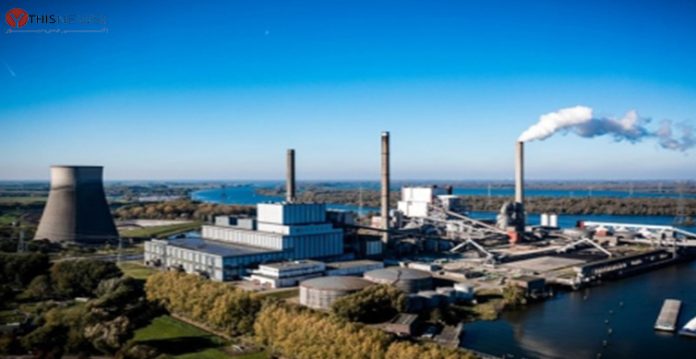Companies and consumers in the Netherlands are using less natural gas and turning to coal and renewable energy sources as the country, like many other European countries, suffers from declining natural gas supplies from Russia.
Prices are skyrocketing and the authorities are searching for storage sites and alternatives.
“Gas consumption has decreased across the society, from companies to consumers,” Peter Hein van Mulligen, chief economist at Statistics Netherlands, told Xinhua news agency on Friday.
“This will undoubtedly continue for a while, which also has to do with the rising price. Everyone needs gas, so the price goes up and companies are looking for alternatives.”
Natural gas consumption in the Netherlands amounted to 17.6 billion cubic meters (bcm) over the first six months of 2022, which is 25 percent less than in the same period last year, according to Statistics Netherlands.
Manufacturing and power plants, in particular, used less natural gas, falling by 30 percent and 28 percent, respectively.
The drop in gas consumption coincides with changes in electricity generation.
ALSO READ: EU Ministers Back 5-bn-Euro Loan to Ukraine
In the second quarter (Q2) of 2022, electricity generation from coal increased by 40 percent and from renewable sources by 25 percent year on year. At the same time, 19 percent less electricity was generated from natural gas.
Solar and wind power also showed strong increases, by 40 percent and 25 percent, respectively, in Q2. The sunny weather and the increased installed solar panel capacity have both resulted in an increase in electricity generation by solar. Wind farms also increased their output due to both greater installed capacity of onshore turbines and favorable weather conditions.
The Dutch government has recently managed to fill the country’s gas storage to around 80 percent of capacity, achieving the European Union (EU) target.
“It is good news that, despite the difficult circumstances, we have succeeded in filling our gas storage to more than 80 percent almost two months ahead of the European deadline,” Minister for Climate and Energy Policy Rob Jetten said.
Filling continues ahead of winter to avoid supply bottlenecks.
Earlier this week, the Eemshaven port in the northern province of Groningen inaugurated a new liquefied natural gas (LNG) terminal comprising two floating units operated by Dutch energy network operator Gasunie.
The new terminal, together with an older LNG terminal in the port of Rotterdam, which has been expanded, has doubled the country’s LNG import capacity.
The Eemshaven floating terminal will convert LNG into gaseous form, which then can be fed into the national natural gas network or transported abroad.
This way the country can import an additional 8 bcm of gas.
(This story has been sourced from a third-party syndicated feed, agencies. Raavi Media accepts no responsibility or liability for the dependability, trustworthiness, reliability, and data of the text. Raavi Media managementythisnews.com reserves the sole right to alter, delete or remove (without notice) the content at its absolute discretion for any reason whatsoever.)







